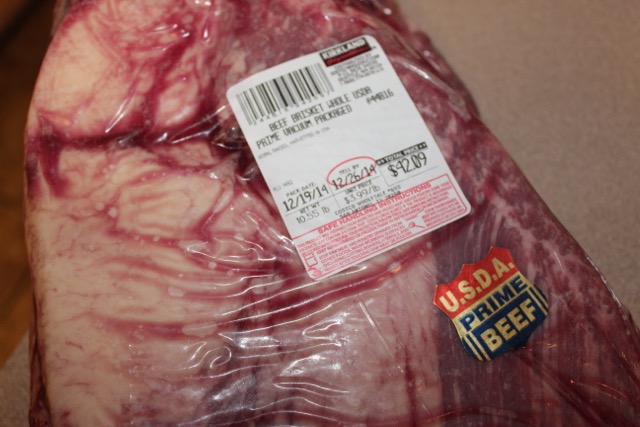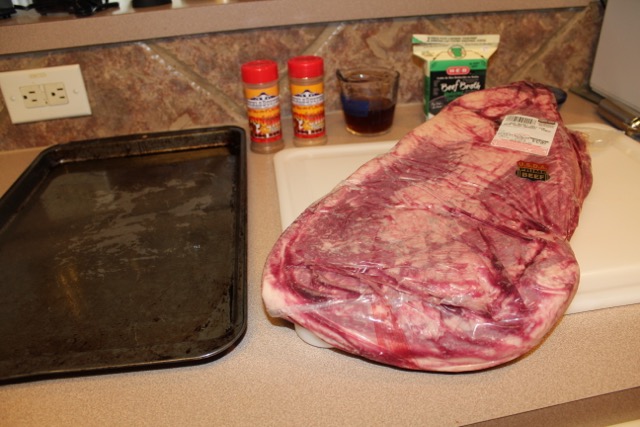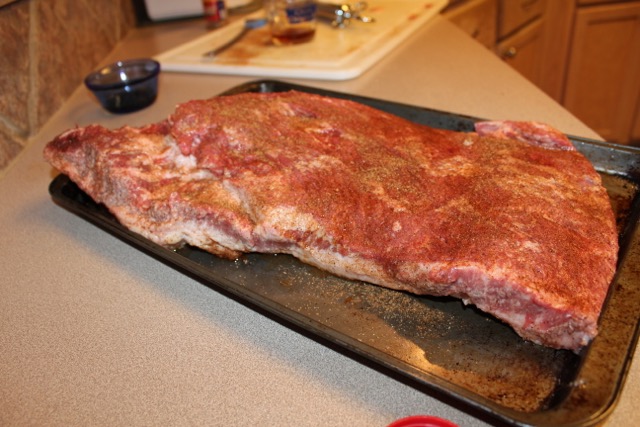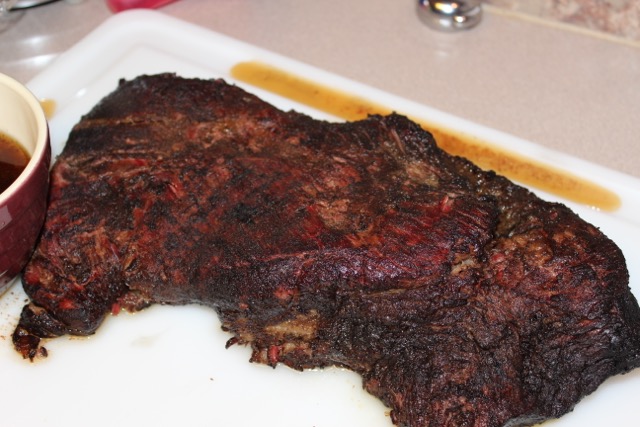The latest Christmas tradition in the Rames household is a Christmas Eve brisket. To make things extra merry this year, my Costco has started to stock prime briskets!
Brisket Selection
When picking out a brisket I always shoot for something around 12 lb with a consistent thickness. I have also been known to grab one end and shake it to find the most flexible brisket.
One a side note, I have also heard an old pitmaster’s trick to select a left handed brisket with the thought that most cows are right footed and the right sided always gets more use and thus tougher. I would also add this to my list of criteria if I could figure out what makes a brisket left handed!
Most of the briskets on hand seemed to be too big or too small. I was eyeing one that was around 11 lb, but in the end I just had a better feeling about a smaller about this 10.55 one.
{<1>}
Brisket Prep
I prepped the brisket the day before Christmas Eve.
{<2>}
After rinsing the brisket I proceeded to trim a ton of fat off of it leaving an 1⁄4 - 1⁄8 inch fat cap. It was almost to the point where I worried it if was enough food! Afterwards, I brushed it with olive oil and then rubbed it down with some hoochie mama rub. With moisture always being a concern I injected it with some low sodium beef broth using my Butterball injector. (I have tried other brands and this one is my favorite).
This is what it looked like after prep:
{<3>}
The Cook
I always used to cook my briskets on my Big Green Egg at 225°F, but I seem to have had better luck kicking it up to 250°F. My wood of choice has always been Mesquite for brisket. (Although, I would love to try post oak if I could find it in chunks).
The cook went down like this:
- Brisket on at 8am
- Brisket hit 160°F at 10am. I wrapped it in aluminum foil along with some extra beef broth.
- Brisket hit 165°F at 11am
- Brisket hit 190°F at 12pm
- Brisket hit 197°F at 12:40pm. My thermapen went in and out like warm butter so I pulled it.
After I pulled it I added an another layer of foil. I then wrapped it up in a couple towels and placed it in an oven upside down so that the meat could reabsorb some of the lost juices (The oven was off). I checked the temperature every hour. At about the 3 hour mark it was dangerously close to 140°F so I removed the towels and turned the oven to warm. About an hour before dinner, my wife needed the oven so I moved it onto Weber Genesis. I turned one burner on low and continued to watch the temperature.
At about 30 minutes prior to serving I removed it from the aluminum foil reserving the juices. I seared it on my genesis for 5 minutes a side. I poured some of the reserved juices on it and let it rest an additional 30 minutes out in the open.
{<4>}
I think this might be my best brisket yet.
Final Thoughts
I have always stuggled to get my timing down. Looking at the past couple cooks I feel the right amout time for my technique is about 30 minutes per pound with 2 hours of resting in the oven. After which, I should sear it and pull it out in the air for 30 minutesish.
Other ideas for experimentation:
- Use a classic Texas salt and pepper rub.
- Forgo the aluminum foil during the cooking process. (I am waiting for a pit controller before doing this as I think it would necessitate an over night cook)